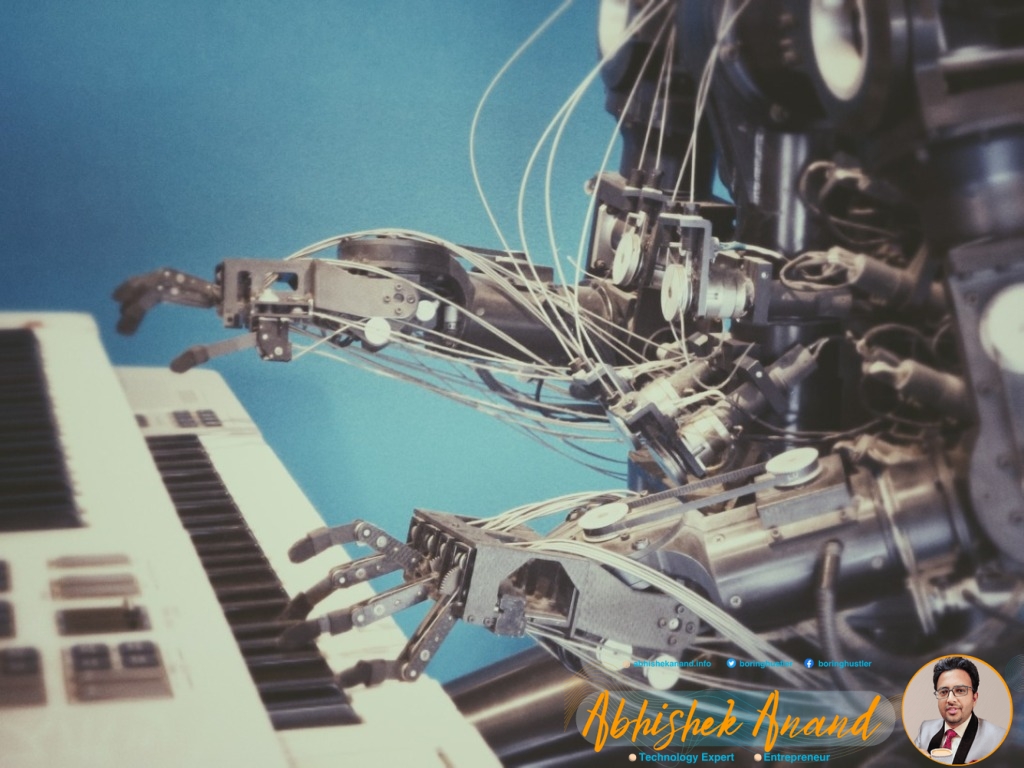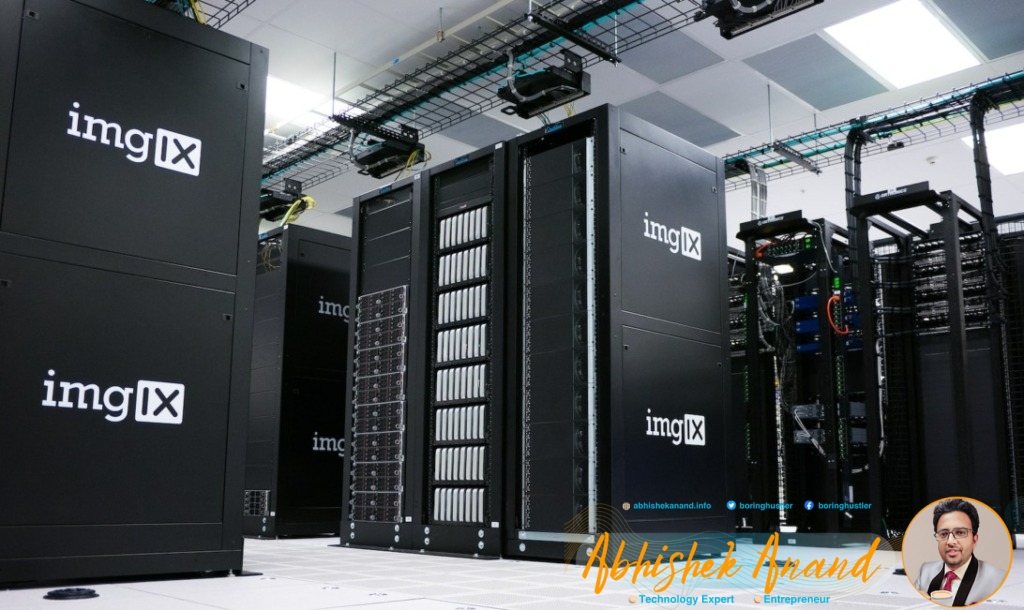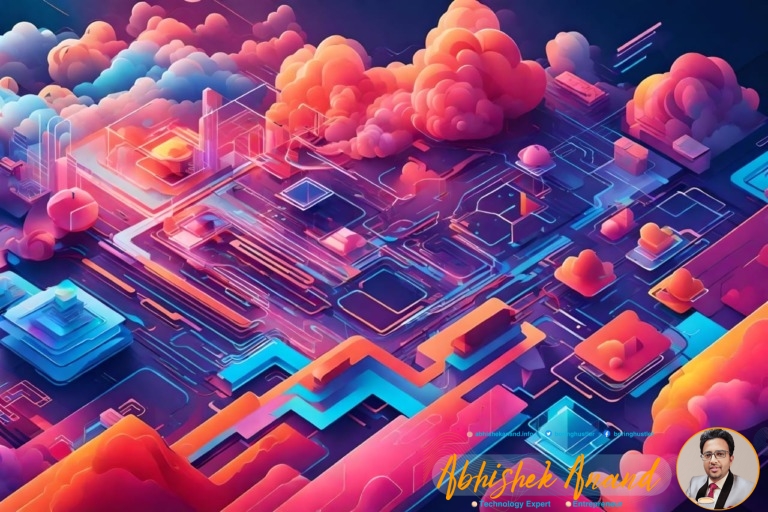As we navigate the ever-changing landscape of technology, it is crucial to stay up-to-date with emerging trends and innovations. In particular, Software as a Service (SaaS) solutions have been gaining traction in recent years due to their flexibility, scalability, and cost-effectiveness. However, simply adopting SaaS solutions may not be enough – businesses must also keep an eye on emerging technologies and innovations within the cloud computing space to remain competitive.
Like a ship navigating through choppy waters, businesses must constantly scan the horizon for new threats and opportunities. With emerging technologies such as Artificial Intelligence (AI), Blockchain, Internet of Things (IoT), Edge Computing, Multi-Cloud Management, Cybersecurity and Compliance becoming increasingly prevalent in the cloud computing space, it is essential for organizations to understand how these innovations can impact their operations. In this article, we will explore some of the most exciting SaaS trends that are currently taking shape in the market and discuss their potential implications for businesses looking to leverage cloud-based solutions.
Overview of SaaS Solutions and Their Benefits for Businesses
A comprehensive overview of SaaS solutions and their associated benefits for businesses reveals a significant potential for optimizing operational efficiency and reducing costs. One of the key benefits of SaaS solutions is that they allow businesses to easily access software applications without having to invest in expensive infrastructure. This means that businesses can quickly scale up or down their software requirements according to their needs, which is particularly important in rapidly changing market conditions.
Another benefit of SaaS solutions is that they offer greater flexibility than traditional software models. Businesses can access SaaS applications from anywhere with an internet connection, which allows employees to work remotely or collaborate across locations. Additionally, upgrades and maintenance are typically handled by the provider, freeing up IT resources within the business.
When choosing a SaaS provider, there are several key considerations that need to be taken into account. These include security measures, backup and disaster recovery protocols, service level agreements (SLAs), data ownership and portability options. Businesses should also evaluate the provider’s track record for reliability and uptime, as well as their ability to integrate with existing systems.
With the benefits of SaaS solutions clear, it’s no wonder that more businesses are turning towards cloud-based services for their software needs. In fact, many providers are now incorporating emerging technologies such as artificial intelligence (AI) and machine learning (ML) into their offerings in order to enhance functionality even further.

Artificial Intelligence and Machine Learning
One of the most significant advancements in computer science is the ability to apply artificial intelligence (AI) and machine learning algorithms to solve complex problems. The implications are vast, particularly for businesses that rely on data-driven decision-making processes. AI-powered automation is already transforming industries by automating repetitive tasks, minimizing errors, and increasing efficiency. There are several trends emerging in AI and machine learning that are worth exploring.
Personalization at scale: As more data is collected about customers, companies can use AI algorithms to analyze this information and create personalized experiences for each individual.
Predictive analytics: By using historical data and machine learning models, predictive analytics can forecast future trends or outcomes with a high degree of accuracy.
Explainable AI: As machine learning becomes more advanced, there is growing concern over how these systems make decisions. Explainable AI aims to make these processes transparent so that users can understand how decisions are made.
Ethical considerations in machine learning: With great power comes great responsibility, and as companies increasingly implement AI solutions, it’s essential to consider ethical concerns such as bias or discrimination.
While the potential benefits of AI and machine learning are vast, there are also ethical considerations that must be taken into account when implementing these technologies. Bias or discrimination can occur if the algorithms used contain inherent biases from their training data or if they’re not designed with ethical considerations in mind. As such, it’s essential to ensure transparency in how these systems make decisions through explainable AI techniques.
Next up is blockchain technology – another innovation that shows promise for revolutionizing business practices by providing secure and transparent record-keeping capabilities without relying on intermediaries like banks or governments.

Blockchain Technology
Blockchain technology has the potential to disrupt traditional business models and increase transparency, security, and efficiency in various industries. It is a decentralized, distributed ledger that records transactions between parties without the need for intermediaries. In recent years, the integration of blockchain in SaaS platforms has gained momentum, allowing businesses to take advantage of its benefits.
One area where blockchain can have a significant impact is data security and privacy. With centralized systems, there is always a risk of data breaches or unauthorized access due to a single point of failure. Blockchain eliminates this risk by distributing data across multiple nodes on the network. This makes it virtually impossible for any single entity to manipulate or corrupt the data stored on the blockchain.
Blockchain technology offers numerous benefits that can revolutionize various industries by increasing transparency, security, and efficiency. Its integration into SaaS platforms can provide users with more secure and reliable services while also protecting their sensitive information from unauthorized access. As we move forward in exploring emerging technologies that could shape our future landscape such as internet of things (IoT), it will be interesting to see how blockchain continues to evolve and integrate with other technologies.
Internet of Things (IoT)
The Internet of Things (IoT) is a rapidly growing area of technology that consists of interconnected devices and sensors. The primary focus of IoT is to enable real-time data collection and analysis, which can be used to inform decision-making processes. Additionally, automation and remote control are key features of IoT, allowing for efficient management and optimization of various systems.
Connected Devices and Sensors
Connected devices and sensors have become a ubiquitous feature of our daily lives, enabling the collection and dissemination of real-time data that can be leveraged to optimize processes and enhance decision-making. In the realm of smart homes, for instance, connected devices such as thermostats, security cameras, and lighting systems gather information about temperature levels, occupancy patterns, and energy consumption. This data is then analyzed by cloud-based platforms to provide homeowners with insights on how to increase energy efficiency and reduce costs. Similarly, in the Industrial IoT (IIoT) space, sensors are used to monitor equipment performance and identify potential failures before they occur. This helps companies avoid costly downtime while also improving safety conditions for workers.
Real-time data collection and analysis has emerged as a key trend in the world of connected devices and sensors. With advancements in edge computing capabilities, it is now possible to process large volumes of data at the device level without requiring constant connectivity to the cloud. This enables faster response times for critical applications such as autonomous vehicles or industrial machinery control systems. As more devices become connected to each other through IoT networks, it is expected that real-time data will play an increasingly important role in driving innovation across industries.
Real-Time Data Collection and Analysis
Real-time data collection and analysis is like a powerful lens that allows us to zoom in on the intricacies of complex systems, revealing insights that were once hidden from view. Real-time data monitoring enables businesses to track and analyze information as it happens, providing them with up-to-the-minute insights into their operations. This new technology is particularly useful for companies that rely on IoT devices, which generate large volumes of data in real-time.
Predictive analytics can be used alongside real-time data monitoring to identify patterns and trends before they become problems. By analyzing past performance and current conditions, predictive analytics can help businesses forecast future outcomes with greater accuracy. The combination of these tools produces a more comprehensive view of business operations, enabling organizations to make better decisions based on real-world data rather than assumptions or guesswork.
As we move forward into the next era of technological advancements, automation and remote control will play an increasingly important role in shaping the future landscape.
Automation and Remote Control
Real-time data collection and analysis has become a critical component of modern businesses, enabling them to make informed decisions based on up-to-date information. However, the next frontier in cloud technology is automation and remote control. Automation refers to the use of technology to perform tasks that were previously done by humans, while remote control involves controlling machines or devices from a distance.
Automation and remote control have already had a significant impact on job roles, particularly in industries such as manufacturing. With machines taking care of repetitive and dangerous tasks, workers can focus on more complex work that requires human skills such as problem-solving and creativity. This increased efficiency and productivity has also led to cost savings for companies. However, there are concerns about the implications for security and accessibility with regards to remote control. As more devices become connected to the internet, they become vulnerable to cyber attacks, making it essential for companies to prioritize security measures.
Three ways automation and remote control are transforming business operations:
Increased efficiency: With machines performing tasks at a faster rate than humans can manage.
Cost savings: By reducing labor costs associated with performing routine tasks.
Improved safety: By removing people from hazardous situations.
As businesses continue to adopt new technologies like automation and remote control, the next step in cloud technology is edge computing which allows fast processing of data closer to its source without having the need for round-trip time between servers or clouds – making it possible for even greater efficiencies in real-time data collection and analysis processes.

Edge Computing
Edge computing is an emerging technology that has garnered significant attention in recent years due to its potential benefits. One of the key advantages of edge computing is faster data processing and reduced latency, which allows for real-time analysis and decision-making closer to the source of the data. Additionally, edge computing improves security and privacy by reducing the amount of sensitive data that needs to be transmitted over a network, while also enhancing network performance by offloading processing tasks from central servers to local devices.
Faster Data Processing and Reduced Latency
Efforts are being made to enhance data processing speed and reduce latency in the cloud computing industry. This is due to the increasing demand for real-time services and applications such as streaming, gaming, and IoT devices that require faster processing times. Real world applications of faster data processing and reduced latency can be seen in various industries such as finance, healthcare, and transportation. For example, in the healthcare industry, faster data processing can lead to quicker diagnoses and treatment decisions based on patient data from multiple sources. In finance, high-frequency trading requires low latency for traders to make informed decisions quickly.
The impact of these technological advancements on user experience cannot be overstated. Reduced latency means less waiting time for users when accessing websites or using apps. Faster data processing also leads to more accurate results which improves overall user satisfaction. However, it is important to note that these technological advancements must be balanced with improved security and privacy measures to protect user information.
Improved Security and Privacy
Improvements in security and privacy measures are crucial for ensuring the protection of user information in cloud computing. As more sensitive data is stored on cloud servers, it becomes increasingly important to have robust security measures in place to prevent unauthorized access or data breaches. Additionally, with the rise of privacy regulations such as GDPR and CCPA, businesses must ensure that they are compliant with these regulations when handling user data.
To improve security and privacy in cloud computing, businesses can implement the following measures:
Multi-factor authentication: This provides an extra layer of security by requiring users to provide multiple forms of identification before accessing their accounts.
Encryption: Data encryption can protect sensitive information from being intercepted or accessed by unauthorized parties.
Regular updates and patches: Keeping software up-to-date can prevent vulnerabilities from being exploited by hackers.
Access controls: Limiting who has access to certain data can reduce the risk of a breach occurring.
Monitoring and logging: Keeping track of system activity can help identify potential threats before they become major issues.
As technology continues to evolve, it is likely that new security threats will emerge. However, implementing these measures can help mitigate risks and ensure that user data remains secure.
Moving forward into the subsequent section about better network performance, it is important to note that improvements in security and privacy measures also contribute to better network performance as they allow for smoother operations without interruptions caused by malicious attacks or accidental breaches.
Better Network Performance
Achieving faster network performance in cloud computing is a critical goal for businesses to ensure efficient operations and customer satisfaction. Network optimization techniques are being developed to improve the performance of cloud-based applications and services. These techniques include bandwidth utilization, which involves maximizing the amount of data that can be transmitted over a network connection. This is achieved by reducing the amount of data that needs to be sent through various means such as compression, caching, and load balancing.
Additionally, other technologies such as software-defined networking (SDN) and network function virtualization (NFV) are being implemented to enhance network performance in cloud computing. SDN allows for centralized management of networks, making it easier to configure, optimize, and secure them while also increasing their scalability. NFV replaces traditional hardware-based network appliances with software running on virtual machines or containers on servers in the cloud. By doing so, it enables more flexible and cost-effective delivery of networking functionality.
As businesses continue to adopt cloud computing technologies, they must focus on improving their network performance for optimal user experience. The next step towards achieving this will be exploring how emerging innovations like Cloud Native Applications can further enhance efficiency for businesses utilizing these tools in their daily operations.

Cloud Native Applications
Cloud native applications are designed to fully leverage the advantages of cloud computing, such as scalability and flexibility, without requiring any infrastructure modifications. The development of these applications requires a different approach than traditional software development. Cloud native development entails designing microservices architecture that can function independently while being integrated into a larger system. This allows for greater agility and faster deployment times.
One notable example of successful cloud native technology implementation is Spotify’s use of Kubernetes to manage their microservices architecture. Kubernetes provides an open-source platform for container orchestration and automates many tasks involved in deploying, scaling, and managing containerized applications. Spotify leverages this technology to deliver personalized music recommendations to millions of users worldwide.
The shift towards cloud native applications is driven by the need for greater agility, scalability, and cost-effectiveness in application development and deployment. As organizations continue to adopt cloud-based solutions, the demand for skilled professionals with expertise in developing cloud-native architectures will continue to grow. The next step in this trend is serverless computing, which eliminates the need for developers to manage servers or infrastructure altogether.
Serverless Computing
Serverless computing is a paradigm shift in application development that allows developers to focus solely on writing code without the need for server management. In other words, it is a cloud computing model where the cloud provider manages and allocates resources as needed, allowing developers to write and deploy code without worrying about infrastructure or scaling. The main benefit of this architecture is that it reduces the operational costs associated with running applications on servers.
Despite its numerous benefits, serverless computing also poses some challenges. One of them is vendor lock-in since each cloud provider has its own unique implementation of serverless architecture. Migrating from one provider to another can be complex and costly, making it difficult for businesses to switch providers once they have committed to a particular platform. Additionally, debugging and testing can be more challenging in serverless environments because developers do not have direct access to the underlying servers.
Despite these challenges, adoption trends of serverless architecture in SaaS solutions are increasing rapidly due to its ability to lower costs and reduce administrative overheads. Many companies are adopting this technology because it enables them to quickly scale their applications based on demand while only paying for what they use. This trend has led many software vendors to offer products and services that support serverless computing architectures which further strengthens its position as an emerging technology in SaaS solutions.
Moving onto containerization, this technology has emerged as another popular solution for organizations looking for ways to improve scalability and portability while reducing infrastructure costs.
Containerization
Containerization has become a popular solution for organizations seeking to enhance their application scalability and portability while reducing infrastructure costs, akin to a virtual shipping container that can hold all the necessary components of an application. This process involves packaging software applications into containers along with all the dependencies required for them to run efficiently in any environment. It offers numerous benefits, including faster deployment times, easier maintenance, and better resource utilization.
The benefits of containerization are many. First and foremost, it allows developers to test and deploy software applications quickly across multiple environments consistently. Containers also offer improved security by isolating individual applications from one another within the same host machine. Additionally, they provide efficient use of resources since they share the operating system kernel while still allowing each application’s unique dependencies to be installed separately.
Despite its advantages, containerization is not without challenges. Implementing this technology requires significant time and effort on behalf of teams responsible for deploying applications since they must learn new tools and methodologies for building containers. Moreover, it can be challenging to manage containers at scale as organizations increasingly adopt more complex microservices architectures.
Moving forward from here, multi-cloud management will be essential as companies seek to leverage multiple cloud providers’ benefits simultaneously without sacrificing efficiency or security.

Multi-Cloud Management
Multi-cloud management is a subtopic that has gained increasing popularity in recent years, as more and more organizations have begun to adopt multi-cloud strategies. One of the key benefits of multi-cloud management is better resource allocation and utilization, as it enables organizations to leverage the strengths of different cloud providers for specific workloads or applications. Additionally, multi-cloud management can improve availability and resilience by providing redundancy across multiple clouds, while also reducing vendor lock-in risks.
Better Resource Allocation and Utilization
Efficient allocation and utilization of resources remain a key focus for cloud providers, as they strive to optimize operations and improve overall performance. This involves resource optimization, which refers to the process of ensuring that resources are being used in the most efficient manner possible. Capacity planning is another important aspect of this subtopic, which involves predicting future resource requirements based on historical data and trends.
To achieve better resource allocation and utilization, cloud providers are leveraging various technologies and strategies. These include:
Automation: By automating routine tasks such as provisioning, scaling, and configuration management, cloud providers can reduce manual effort and improve efficiency.
Virtualization: Through virtualization, multiple workloads can be consolidated onto a single physical server or storage device. This not only improves resource utilization but also reduces hardware costs.
Containerization: Containers allow applications to be packaged into lightweight units that can run anywhere with minimal overhead. This enables better resource utilization by eliminating the need for excess capacity.
The efficient allocation and utilization of resources is critical for achieving optimal performance in the cloud environment. The adoption of new technologies such as automation, virtualization, and containerization can help cloud providers achieve these goals while improving their overall operational efficiency. Moving forward into the subsequent section about ‘improved availability and resilience’, it is important to note that these technologies will play an important role in achieving improved uptime through effective load balancing techniques.
Improved Availability and Resilience
Achieving high availability and resilience is crucial for ensuring uninterrupted access to cloud services and data. Cloud infrastructure must be designed in such a way that it can handle failures without disrupting the users’ experience. This requires redundant systems, failover mechanisms, and disaster recovery procedures that can quickly restore service in case of an outage. With the increasing demand for always-on applications and real-time processing, cloud providers are investing heavily in improving their availability and resilience capabilities.
Disaster recovery is a critical component of achieving high availability in the cloud. It involves creating duplicate copies of data and applications in offsite locations that can be quickly accessed if there is a disruption at the primary site. Disaster recovery solutions must be able to provide fast recovery times, low RPO (recovery point objective), and low RTO (recovery time objective) to minimize downtime and data loss. By implementing robust disaster recovery plans, cloud providers can ensure continuous operation even during unexpected events such as natural disasters or cyber-attacks.
Improved availability and resilience are essential for ensuring customers have uninterrupted access to their critical applications and data on the cloud. The next section will discuss how emerging technologies are helping reduce vendor lock-in while providing more flexibility to customers when choosing their cloud providers.
Reduced Vendor Lock-In
Improved availability and resilience in SaaS platforms have been a significant trend in recent years. However, businesses also need to minimize the risk of vendor lock-in when relying heavily on cloud services from a single provider. Vendor lock-in can limit flexibility, increase costs, and hinder innovation. Therefore, reducing vendor lock-in has become an essential focus for businesses seeking to avoid dependency on one provider.
The benefits of reduced vendor lock-in include increased flexibility for businesses to switch providers without affecting operations significantly. This helps organizations negotiate better pricing and terms with multiple vendors while maintaining control over their data and applications. Companies can implement strategies for minimizing vendor lock-in by adopting open standards that support interoperability between different cloud providers, using multi-cloud environments, and investing in containerization technologies that enable applications to run consistently across various cloud infrastructures. By following these strategies, companies can effectively leverage the benefits of cloud services while avoiding the risks associated with vendor lock-in.
As companies continue to expand their reliance on SaaS solutions, cybersecurity threats remain a top concern. In the next section, we will explore emerging trends in cybersecurity and compliance in the cloud environment.
Cybersecurity and Compliance
The implementation of robust cybersecurity measures and compliance standards remains a crucial concern for businesses utilizing SaaS solutions. Cybersecurity challenges abound as cybercriminals become more sophisticated in their attacks, making it necessary for companies to stay vigilant with their security protocols. Cloud providers have been working on enhancing the security of their platforms by incorporating advanced technologies such as machine learning and artificial intelligence to detect and mitigate threats promptly.
Compliance requirements are another factor that businesses need to consider when adopting SaaS solutions. Companies operating in highly regulated industries such as healthcare, finance, and government agencies must adhere to strict compliance guidelines such as HIPAA, PCI DSS, FERPA, among others. Failure to comply with these regulations can result in hefty fines or even legal action against the business. Therefore, it is imperative that SaaS vendors provide compliance-ready platforms that meet the specific regulatory requirements.
Cybersecurity and compliance are two critical factors that should be considered when evaluating SaaS solutions for your business needs. As cloud technology continues to evolve rapidly, so does the threat landscape surrounding it. It is essential for companies to work closely with their cloud providers to ensure adequate protection against cyber threats while also meeting regulatory obligations successfully. The next section will delve into collaboration and communication tools available within SaaS solutions that enhance productivity and streamline workflows without compromising security or compliance standards.
Collaboration and Communication Tools
Collaboration and communication tools are essential components of modern business operations, enabling teams to work together seamlessly and efficiently. In today’s digital age, virtual meetings have become increasingly popular, particularly due to the COVID-19 pandemic. As a result, businesses have turned towards video conferencing solutions such as Zoom, Google Meet or Microsoft Teams to connect with their remote workforce and clients worldwide. These tools have revolutionized the way teams collaborate by allowing them to meet virtually and share information in real-time.
Team collaboration: Collaboration tools like Trello, Asana or Slack allow team members to communicate and share information easily from a single platform. These software platforms enable employees working on the same project to stay up-to-date on each other’s progress without having to send constant emails back-and-forth.
Virtual Meetings: Video conferencing tools like Zoom or Skype facilitate real-time meetings where team members can discuss ideas face-to-face regardless of their location. They also offer additional features such as screen-sharing capabilities that help improve productivity during presentations.
Cloud-based file sharing: Platforms such as Dropbox or Google Drive provide secure cloud storage for important documents that need to be accessed by multiple team members at different times from various locations.
Mobile accessibility: Many collaboration platforms offer mobile apps that enable users to access important files and receive notifications on-the-go, improving productivity even when they are away from their desk.
As businesses continue operating remotely due to COVID-19 restrictions, it is clear that collaboration and communication tools will play an essential role in keeping teams connected globally. With new advancements in technology emerging every day, we can expect these tools to continue evolving rapidly over time. However, what trends will emerge next? Let’s explore future predictions for SaaS solutions in the cloud in the upcoming section.’

Future Trends and Predictions for SaaS Solutions in the Cloud
The impact of the global pandemic has been felt across all industries, including the SaaS industry. As more and more businesses move their operations online, there is a growing demand for cloud-based solutions. The changing customer behavior has also contributed to this shift towards SaaS solutions in the cloud. Customers are looking for flexible and scalable solutions that can adapt to their changing needs.
With these changes in mind, SaaS providers must keep up with the evolving demands of their customers. Future prospects for SaaS solutions in the cloud include increased use of artificial intelligence (AI) and machine learning (ML). These technologies have the potential to improve efficiency and provide better insights into customer behavior.
Another trend to watch out for is the rise of low-code platforms. These platforms allow users to create custom applications without needing extensive coding knowledge. This opens up new opportunities for businesses that may not have had access to such resources before. Overall, as technology continues to evolve and shape our world, it is crucial for SaaS providers to stay ahead of trends and anticipate future needs.
Conclusion
SaaS solutions have revolutionized the way businesses operate, offering numerous benefits such as cost savings, flexibility, and scalability. Emerging technologies like artificial intelligence, machine learning, blockchain, IoT, edge computing, multi-cloud management, cybersecurity and compliance tools are driving the growth of SaaS solutions. These innovations are transforming business processes and enabling companies to achieve greater efficiency and productivity.
As businesses continue to adopt SaaS solutions in the cloud environment, collaboration and communication tools have become essential for team members to work together effectively. With a plethora of options available in the market today, it can be challenging to choose which ones would best suit your needs. However with careful research and selection process companies can find suitable platforms that meet their specific requirements.
In conclusion, SaaS solutions are evolving at a rapid pace thanks to emerging technologies that drive innovation forward. As businesses embrace these innovations they will benefit from increased efficiencies across all areas of operations. The future of SaaS is bright as more organizations shift towards adopting cloud-based services. Like a beacon guiding ships through stormy seas; these innovations light up new pathways for businesses providing them with clear directions towards success in an ever-changing landscape of technological advancements.

